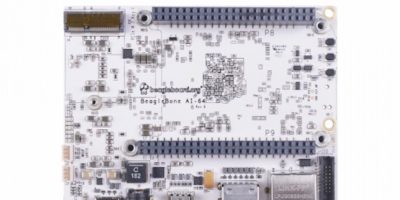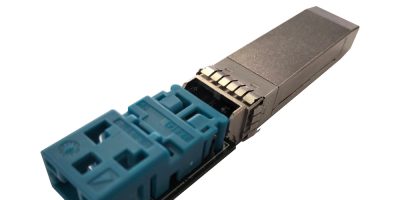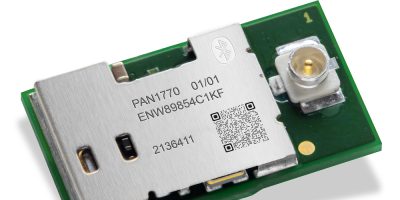BeagleBoard.org’s first 64bit open hardware single board computer (SBC) the BeagleBone AI-64 SBC is available from stock from Farnell (in EMEA, Newark in North America and element14 in APAC).
It is designed for building embedded applications and brings a complete artificial intelligence (AI) and machine learning system to developers, said Farnell.
“We believe this board will capture the imaginations of designers and empower them to build complete and powerful AI systems,” said Christine Long, CEO of the BeagleBoard.org Foundation. She continued that it is offered at “an extremely competitive price point, we are excited about the new applications that BeagleBone AI-64 will enable for new and experienced users.”
The BeagleBone AI-64 SBC provides all the on-board peripherals required to start learning and building applications. The BeagleBone cape headers provide expansion possibilities with hundreds of open source hardware examples and dozens of off-the-shelf embedded expansion options. The user needs only to add a simple web browser, power source and network connection, confirmed the company.
The SBC is described as a milestone for BeagleBoard.org by Jason Kridner, president of the BeagleBoard.org Foundation board. “With multiple SuperSpeed USB ports, familiar BeagleBone cape expansion headers and desktop-capable performance, the general purpose embedded applications for this board are endless, with eight TOPS [terra operations per second] neural network performance accessible through familiar Python libraries to boot.”
BeagleBone AI-64 builds on more than a decade of success in open hardware single board Linux computers. It combines the power of the Texas Instruments TDA4VM SoC with dual Arm Cortex-A72 cores, a programmable C7x DSP core and deep learning, vision and multimedia accelerators to offer developers access to fast analytics, data storage options and high speed interfaces. In addition to “a vast amount of computing power”, the SBC includes connectors to create applications such as autonomous robots and drones, smart buildings and factories, home security, retail automation, media servers, machine learning, machine vision and computer vision.
The BeagleBone AI-64 board feature set includes the BeagleBone cape header compatibility with existing add-on boards and ikroBUS Shuttle header, providing access to hundreds of existing Click sensors and actuators. The memory capability is 4Gbyte LPDDR4, 6Gbyte eMMC flash with high speed interface and a MicroSD card. An M.2 E-key PCIe connector interfaces with Wi-Fi / Bluetooth adapters and there is a USB 3.0 Type-C SuperSpeed interface for power input and data and two USB 3.0 Type-A SuperSpeed interfaces and Gigabit Ethernet.
For camera and display options there is a Mini DisplayPort interface, a two or four-lane CSI connector for camera options, and a four-Lane DSI connector for popular display types.
User interfaces include boot, reset and power buttons, a power indication LED and five user LEDs. In addition, there is a 5V DC input power, UART and JTAG 10pin Tag-Connect for debug also included.
In addition to the TDA4VM, there are vision processing accelerators with an image signal processor (ISP) and multiple vision assist accelerators including DMPAC, dual 64-bit Arm Cortex-A72 microprocessors, six Arm Cortex-R5F MCUs at up to 1.0GHz, memory subsystem with up to 8Mbyte of on-chip L3 RAM with ECC and coherency and 12 multi-channel audio serial port modules.







